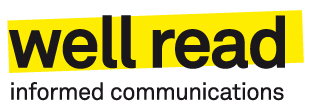
At the risk of sounding a bit David Brent, effective marketing and communication starts with listening.
But as communicators working in the charity and public sector, how often do you take the time to really listen to your beneficiaries/patients and those who you work with to ensure your marketing materials cut the mustard?
Too often charities assume that they know what people need from them and are falling short of their needs and expectations. It’s therefore really important to take the time and make the space to ask your audiences whether there’s anything you could be doing better.
It could be as simple as asking for feedback on your membership newsletter or e-bulletin – are you giving people the information they want to read; do they like the format, the frequency…? I carried out this exercise at the Wildlife Trust in Sheffield and discovered that people wanted more expert articles on wildlife. The organisation was so busy promoting their campaigns and events, they’d lost sight of why people joined… because they loved learning about wildlife!
Nailing your marketing collateral might also mean asking people whether the language you use is right for them. Are you using jargon they don’t understand or terms that offend or put them off in some way? This can be particularly important if you’re dealing with a health condition or issue which is sensitive, or around any stigma relating to their condition or circumstances. A panel of ‘expert patients’ or service users to vet your draft materials can provide the assurance that your language doesn’t jar.
It’s fashionable now to talk about ‘unconscious bias’, which means showing a prejudice for or against a thing, person or group Even the most ‘right on’ people can perpetuate stereotypes without realising it. Working with a charity that supports sex workers has really challenged me to unpick some of my unconscious biases and admittedly, ignorance about those who choose to do sex and erotic work.
Consider if there are any unconscious biases in your marketing or communications materials – are there staff groups, volunteers or external partners you could consult with to iron out any language or beliefs that could be controversial or discriminatory?
Focus groups (yes, remember the good old days when we could all get in a room to talk face to face) are also an awesome way of testing whether your branding, messages or materials resonate with their intended audiences. Tasked with testing the new Girl Guides badges with young girls in my home town of Chesterfield, I duly recruited several groups of girls, ranging from 7 -12 years of age to get their reactions to some potential designs. The feedback was mindboggling, highlighting issues around what icons and insignia young people relate to (SatNav type imagery for an orienteering badge, for example) and those they engaged less with; as well as revealing varying levels of literacy. The lesson being that unless the organisation was solely aimed at middle class educated kids the new badges needed to take on board the needs of girls from other backgrounds.
Of course, listening is one thing, but showing that you’ve heard what people have told you by making changes, is another thing. Just remember to take staff (and volunteers) along with you in the process and don’t be coy about showing where you’ve upped your game to respond to service users’ (and other audience’s) needs and expectations. That might mean changing the format of your marketing materials, the channels you use, adopting a new language style or tone of voice, or perhaps adapting your materials for people with dementia, sight loss or for those who don’t speak English as a first language.
Give me a shout if you want some advice about how to understand your charity’s audiences better. I’m only an email away and am all ears! kate.dawson@wellreadpr.com









